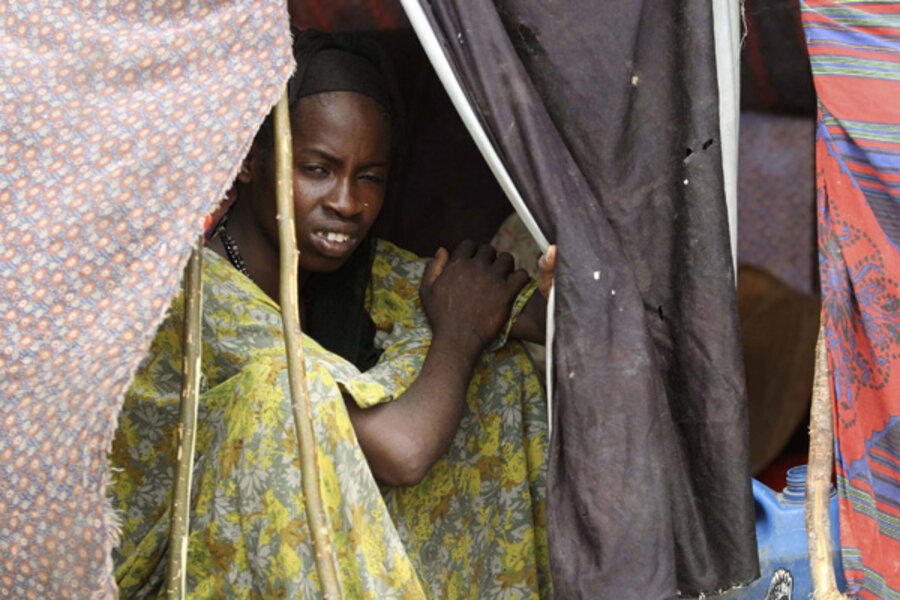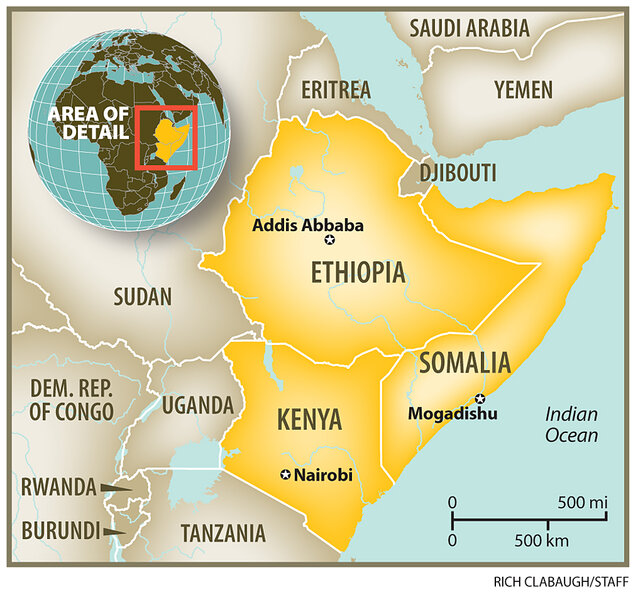Why the UN declared a famine in Somalia (VIDEO)
Loading...
| Nairobi, Kenya
Hundreds of thousands of people living in southern Somalia are now in the grip of the first famine in Africa in 27 years, the United Nations said on Wednesday. They are the worst-affected of 11 million people across Africa’s northeast, where at least two years with no rainfall has brought a drought that has killed livestock and robbed people of the ability to find food or water.
It was the first announcement of a famine since almost a million Ethiopians starved to death in 1984. The UN and most international agencies use a five-stage scale to classify famine, with phase 5 – "famine/human catastrophe" – occurring when at least two people die each day, more than 30 percent of people are so malnourished that they need urgent food to survive, and people can find less that four liters of water per day.
Rates of malnutrition in parts of southern Somalia are the highest in the world, with more than half of the population in need of urgent food, according to new UN figures.
Across the Horn of Africa, a third of children are so malnourished that they need special formula food to nurse them back from looming starvation.
“It is likely that tens of thousands of people will have already died [in southern Somalia], the majority of them children,” Mark Bowden, the head of the UN operation for Somalia, told a news conference in Nairobi, Kenya's capital.
“I’m not going to say it’s not going to deteriorate further – it will," he added. “Even if the world starts acting as it must, now, lives will be lost. But there are many more lives that can be saved if we see the level of response that is desperately needed.”
UN agencies and global aid organizations have in the past two weeks launched some of their largest appeals ever for donations to allow them to reach the worst affected populations. At least $300 million is needed within the next month for Somalia's crisis alone, Mr. Bowden said.
Already overwhelmed refugee camps in northern Kenya and southern Ethiopia are seeing 1,400 desperate Somalis arriving each day, some having walked for weeks to find help.
Even away from the camps, millions of other people, most of them nomadic herders who survive by drinking the milk and selling the meat of their animals, have seen their herds wiped out for a lack of water or pasture.
In Somalia, chief among aid workers' challenges is reaching those worst affected with food aid. Almost all of the 3 million Somalis facing famine live in areas controlled by Al Shabab, pro-Al Qaeda Islamists who forced out aid organizations last year.
Some agencies continue to work in the insurgents’ territory, and Bowden said there was increasing “dialogue” between the international community and Al Shabab over how to deliver relief supplies.
“Humanitarian actions in Somalia are difficult but not impossible,” he said.
The UN’s first response will be to provide people with vouchers to buy food from local traders, who agree to fixed prices in markets where there is still some food available. Due to inflation – sorghum, a staple, has seen 240 percent inflation in southern Somalia – those goods are beyond the reach of the vast majority of the starving population unless they have the vouchers.
Food deliveries will follow when security arrangements have been guaranteed.
Separately, US Secretary of State Hillary Clinton on Wednesday announced $28 million in aid for Somalia, which is targeted toward refugees and those living away from Islamist areas. American antiterror laws enacted after Sept. 11 bar Washington from giving aid if there is any risk it can “materially benefit” proscribed groups like al-Shabaab.
[ Video is no longer available. ]






